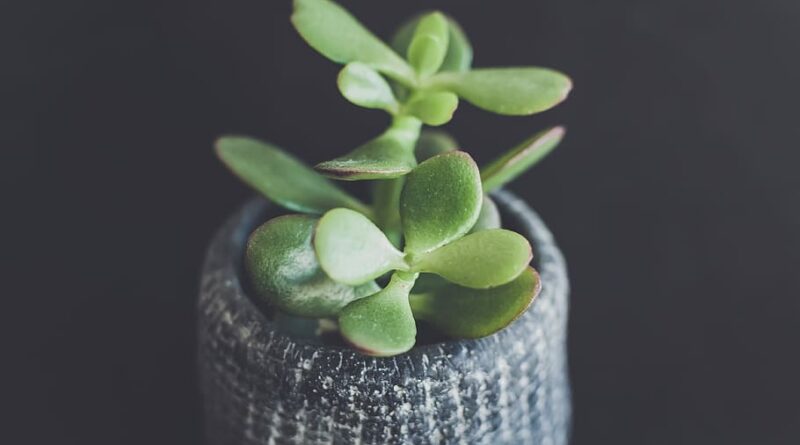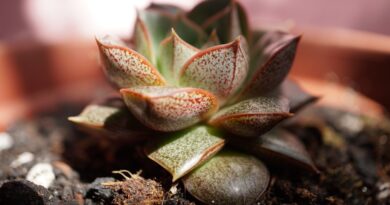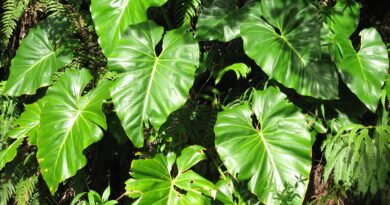Jade plant
The Jade Plant: A Timeless Symbol of Prosperity, Wellness, and Natural Beauty
Introduction
In the world of indoor gardening, few plants boast the elegance and symbolism of the Jade Plant, scientifically known as Crassula ovata. Revered for its lush green leaves, sturdy structure, and effortless charm, the Jade Plant has become a beloved addition to homes and offices worldwide. But beyond its aesthetic appeal, the Jade Plant carries a rich cultural history, significant symbolism, and fascinating characteristics. Join us as we embark on a journey to explore the captivating world of the Jade Plant, uncovering its origins, care requirements, symbolic significance, and the reasons why it continues to capture the hearts of plant enthusiasts across the globe.
Origins and Botanical Marvel
The Jade Plant, native to South Africa, belongs to the Crassulaceae family. Its botanical name, Crassula ovata, hints at its robust and fleshy leaves, which store water, making it an excellent succulent. In its natural habitat, the Jade Plant thrives in arid regions, adapting to low water availability and bright sunlight. This adaptation makes it an ideal choice for indoor gardening, as it can endure periods of drought and low light, making it one of the hardiest and low-maintenance plants.
Aesthetic Allure: The Beauty of Jade Plant
The Jade Plant’s allure lies in its simplicity. Its smooth, oval-shaped leaves are a vibrant green, often tinged with red or yellow edges, creating a striking contrast. Its compact, bushy form makes it a versatile plant, fitting into various decorative settings. Whether placed on a windowsill, office desk, or as a centerpiece in a living room, the Jade Plant adds a touch of natural elegance to any space.
Caring for Jade Plant: Cultivating Prosperity and Wellness
One of the reasons for the Jade Plant’s popularity is its ease of care. To thrive, it requires well-draining soil, minimal watering, and bright, indirect sunlight. Overwatering is a common mistake that should be avoided, as the plant is susceptible to root rot. Allowing the soil to dry out completely between waterings ensures a healthy and vibrant Jade Plant. Regular pruning can help maintain its shape and promote branching, enhancing its aesthetic appeal.
Symbolic Significance: Prosperity, Wealth, and Positive Energy
Beyond its ornamental value, the Jade Plant holds significant cultural symbolism, especially in Asian cultures. In Feng Shui, the ancient Chinese art of harmonizing energy, the Jade Plant is believed to attract positive energy and financial prosperity. Placing a Jade Plant near the entrance of a home or business is thought to invite wealth and success. Its round leaves symbolize good fortune and the plant’s ability to retain water embodies the concept of preservation and growth, making it a potent symbol for prosperity and abundance.
Jade Plant in Folklore and Traditions
The Jade Plant’s symbolism extends beyond Feng Shui. In different cultures, it is considered a talisman for good luck and protection. Folklore in various parts of the world associates the Jade Plant with warding off evil spirits and bringing harmony to the environment. Its enduring nature and ability to withstand harsh conditions have led to beliefs that it possesses protective qualities, making it a cherished plant in many households.
The Jade Plant: A Source of Inspiration
The Jade Plant’s influence transcends cultures and has inspired artists, writers, and gardeners alike. Its resilience, simplicity, and understated beauty have made it a subject of creative expression. Artists incorporate its graceful form into paintings, writers draw metaphors from its enduring nature, and gardeners experiment with different cultivars and arrangements, celebrating its diverse beauty.
Conclusion: Cultivating Tranquility and Abundance
In the tapestry of nature, the Jade Plant stands as a testament to resilience, simplicity, and enduring beauty. Its ability to thrive with minimal care mirrors the strength and adaptability inherent in all living beings. Beyond its aesthetic appeal, the Jade Plant carries profound symbolism, reminding us of the importance of balance, prosperity, and positive energy in our lives.
As we welcome this unassuming succulent into our homes and hearts, let us embrace its teachings—of thriving amidst adversity, of finding beauty in simplicity, and of attracting abundance through positivity. The Jade Plant is not just a potted ornament; it is a living embodiment of tranquility, prosperity, and the boundless wonders of nature. So, the next time you gaze upon its glossy leaves, remember the stories it carries and the lessons it imparts—a reminder that in cultivating the Jade Plant, we cultivate not just a plant but a state of mind—a state of abundant tranquility and enduring prosperity.



